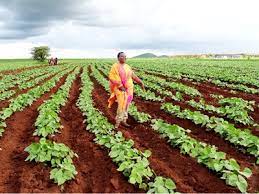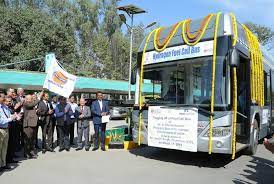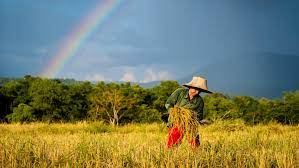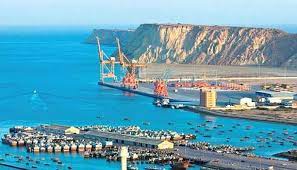Today Current Affairs: 23rd August 2022 for UPSC IAS exams, State PSC exams, SSC CGL, State SSC, RRB, Railways, Banking Exam & IBPS, etc
Table of Contents
Hunger Stones:

Europe was suffering from the worst drought, therefore rivers have dried up and there is the emergence of Hunger Stones.
- Hunger Stones are the common hydrological marker in central Europe and date back to the pre-instrumental era.
- They serve as reminders to today’s generation of previously dire water shortages.
- Usually found in Europe, they were embedded into rivers by our ancestors when rivers subdued to severe levels subsequently causing famine and food shortages.
- Many of the hunger stones found have unique carvings on them that seek to remind the next generation that if water levels get to this point, food availability will be affected.
- These stones were embedded into the rivers in Germany & other german settlements from the 15th to 19th centuries.
Inscriptions: - It expressed that drought had brought a bad harvest, lack of food, high prices, and hunger for poor people,
Drought Tolerant Crop:

A study has noted that a common weed named “Portulaca oleracea”, commonly known as purslane, offers important clues about creating drought-tolerant crops in a world beset by climate change.
- Yale University scientists integrated two metabolic pathways to produce a novel type of photosynthesis that enables the weed to withstand drought while remaining highly ‘productive’.
- Purslane possesses evolutionary adaptations that allow it to be both highly productive and drought tolerant.
- It is mostly an annual, but it may be perennial in the tropics.
- Stems are glabrous, fleshy, purplish-red to green, arising from a taproot, often prostrate, forming mats.
- It is most common in the temperate and subtropical regions, although it extends into the tropics and higher latitudes.
- It is common in fields, gardens, vineyards, lawns, driveways, dunes, beaches, salt marshes, waste areas, eroded slopes, bluffs and riverbanks.
- It competes for resources with many field crops, particularly herbaceous species that are germinating or growing in competition.
- Affected crops include: asparagus, red beets, celery, crucifers, cotton, maize, onions, potatoes, rice, soyabeans, sugarcane, tomatoes and wheat.
- It has a wide tolerance of photoperiod, light intensity, temperature, moisture and soil type.
- Seeds germinate under conditions that enhance the survival of seedlings.
- The species is self-compatible.
India’s First Hydrogen Fuel Cell (HFC) Bus:

The Union Minister of State of Science & Technology launched India’s first Hydrogen Fuel Cell (HFC) Bus.
- A hydrogen fuel cell is an electrochemical device that converts hydrogen into electrical energy.
- Fuel cells work in a similar manner to conventional batteries found in electric vehicles, but they do not run out of charge and don’t need to be recharged with electricity.
- They continue to produce electricity as long as there is a supply of hydrogen.
- One of the most successful fuel cells uses the reaction of hydrogen with oxygen to form water.
- They produce no tailpipe emissions (emission of gaseous and particulate pollutants) and only emit water vapour and warm air.
- They are more efficient than internal combustion engine vehicles.
- Hydrogen FCEVs have an advantage over battery powered EVs in terms of refuelling time, hydrogen can be refilled in a fuel cell vehicle in a matter of minutes, nearly as fast as an internal combustion engine can be refilled with fossil fuels.
- The HFC bus has been developed by the Council of Scientific & Industrial Research (CSIR) and KPIT, an Indian Multinational Corporation.
- The launch of this India’s first truly indigenously developed HFC Bus is in tune with the National Hydrogen Energy Mission.
- The fuel cell utilizes Hydrogen and Air to generate electricity to power the bus and the only effluent from the bus is water.
- Thus, making it possibly the most environmentally friendly mode of transportation.
- The high efficiency of fuel cell vehicles ensures lower operational costs per kilometre than diesel powered vehicles and can bring freight revolution in India.
Supercharged Rice:

The Scientists from the Chinese Academy of Agricultural Sciences have shown how a transcriptional regulator can boost grain yields and shorten the growth duration of rice.
- This ‘supercharged biotech rice’ yields 40% more grain.
- The report has pointed out that giving a Chinese rice variety a second copy of one of its own genes has boosted its yield by up to 40%.
- When a second copy of a single gene (called OsDREB1C) is added to rice, it improves photosynthesis and nitrogen use, speeds up flowering and absorbing nitrogen more efficiently — offering larger and more abundant grains.
- The change helps the plant absorb more fertilizer, boosts photosynthesis, and accelerates flowering, all of which could contribute to larger harvests.
- The researchers added the same ‘native’ gene again, and not any foreign one (as in the case of BT cotton or BT soybean).
- This method is best described as genetic modulation.
- Gene modulation refers to the process of temporarily altering gene expression levels without making heritable changes to the underlying cellular DNA.
- It is not a genetic modification (GM) and neither is the result of a transgenic plant, carrying elements from another donor.
CPEC Authority:

China gave nod to Pakistan’s decision to scrap the China-Pakistan Economic Corridor (CPEC) Authority amid reports of growing rift between the all-weather friends over the slow pace of the USD 60 billion project.
- The China-Pakistan Economic Corridor (CPEC) Authority was established through an ordinance in 2019.
- It was aimed at accelerating the pace of CPEC-related activities, finding new drivers of growth, unlocking the potential of interlinked production networks and global value chains through regional and global connectivity.
- Pakistan occupied Gilgit Baltistan has been witnessing a spurt in the local protest against the Pakistan Army over land issues.
- The local population is angry at the “land grabbing” spree of the army, all in the name of CPEC.
- In April 2022, three Chinese were killed in a suicide bombing in Karachi University by Baloch Liberation Army (BLA), which opposed China’s investments in Balochistan.
- China is reportedly pressing Pakistan to permit the Chinese agencies to provide security for their personnel while Islamabad is resisting as it meant boots on the ground for Chinese armed forces.
- The CPEC projects were also facing delays because of the change in taxation policies by the last government in violation of commitments given to China.
China Pakistan Economic Corridor:
- CPEC is a 3,000-km long route of infrastructure projects connecting China’s northwest Xinjiang Uygur Autonomous Region and the Gwadar Port in the western province of Balochistan in Pakistan.
- It is a bilateral project between Pakistan and China, intended to promote connectivity across Pakistan with a network of highways, railways, and pipelines accompanied by energy, industrial, and other infrastructure development projects.
- It will pave the way for China to access the Middle East and Africa from Gwadar Port, enabling China to access the Indian Ocean and in return China will support development projects in Pakistan to overcome the latter’s energy crises and stabilising its faltering economy.
- CPEC is a part of the Belt and Road Initiative.
- The BRI, launched in 2013, aims to link Southeast Asia, Central Asia, the Gulf region, Africa and Europe with a network of land and sea routes.
Facial Recognition:

Right to Information (RTI) responses received by the Internet Freedom Foundation reveal that the Delhi Police treats matches of above 80% similarity generated by its facial recognition technology (FRT) system as positive results.
- Facial recognition is an algorithm-based technology which creates a digital map of the face by identifying and mapping an individual’s facial features, which it then matches against the database to which it has access.
- It can be used for two purposes:
- firstly, 1:1 verification of identity wherein the facial map is obtained for the purpose of matching it against the person’s photograph on a database to authenticate their identity. For example, 1:1 verification is used to unlock phones. However, increasingly it is being used to provide access to any benefits or government schemes.
- Secondly, there is the 1:n identification of identity wherein the facial map is obtained from a photograph or video and then matched against the entire database to identify the person in the photograph or video. Law enforcement agencies such as the Delhi Police usually procure FRT for 1:n identification.
- The use of FRT presents two issues: issues related to misidentification due to inaccuracy of the technology and issues related to mass surveillance due to misuse of the technology.
Second Phase Of Grameen Udyami Project:

National Skill Development Corporation, NSDC in partnership with Seva Bharti and Yuva Vikas Society launched the second phase of Grameen Udyami Project to augment skill training in tribal communities for their inclusive and sustainable growth.
- Grameen Udyami is a unique multiskilling project, funded by NSDC that aims to train 450 tribal students in Madhya Pradesh and Jharkhand.
- The project is being implemented in Maharashtra, Rajasthan, Chhattisgarh, Madhya Pradesh, Jharkhand, and Gujarat.
- This concept was crystallized by Minister of Tribal Affairs and tribal MPs.
Forever Chemicals:

A recent study published in Environment Science and Technology has found that rainwater from many places across the globe is contaminated with “per- and polyfluoroalkyl substances,” (PFAs), which are called “forever chemicals” because of their tendency to stick around in the atmosphere, rainwater and soil for long periods of time.
- PFAs are man-made chemicals used to make non-stick cookware, water-repellent clothing, stain-resistant fabrics, cosmetics, firefighting forms and many other products that resist grease, water and oil.
- PFAs can migrate to the soil, water and air during their production and use.
- Since most PFAs do not break down, they remain in the environment for long periods of time.
- Some of these PFAs can build up in people and animals if they are repeatedly exposed to the chemicals.
- Variety of health risks are attributed to PFA exposure including decreased fertility, developmental effects in children, interference with body hormones, increased cholesterol levels and increased risk of some cancers.




